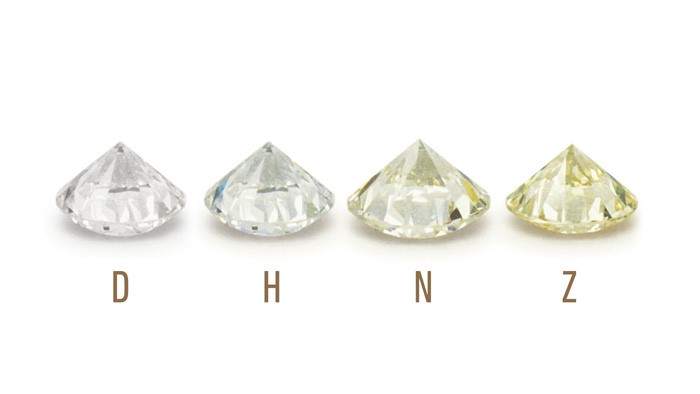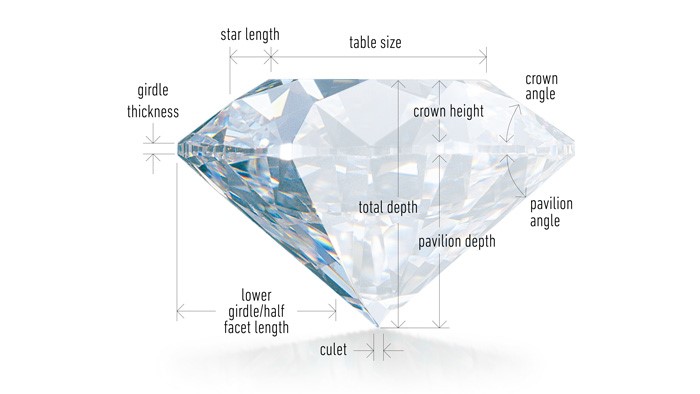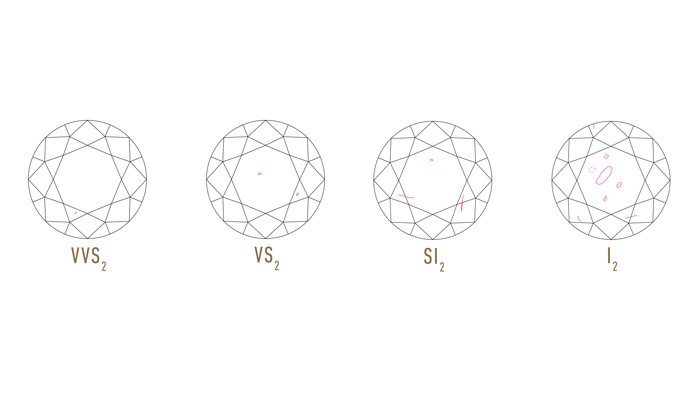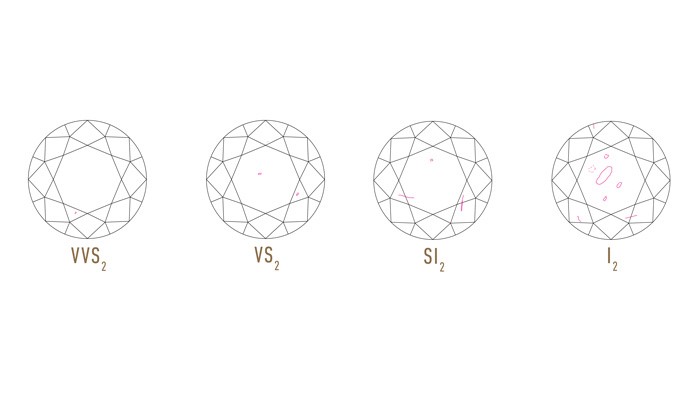DIAMOND EDUCATION
Established in 1931, GIA (Gemological Institute of America) is the world’s foremost authority on diamonds, colored stones, and pearls. It is also the world’s trusted source for unbiased assessment.
GIA created the first, and now globally accepted standard for describing diamonds: Color, Clarity, Cut and Carat Weight. Today, the 4Cs of Diamond Quality is the universal method for assessing the quality of any diamond, anywhere in the world.
DIAMOND COLOR
Diamond Color Actually Means Lack of Color
The diamond color evaluation of most gem-quality diamonds is based on the absence of color. A chemically pure and structurally perfect diamond has no hue, like a drop of pure water, and consequently, a higher value. GIA’s D-to-Z diamond color-grading system measures the degree of colorlessness by comparing a stone under controlled lighting and precise viewing conditions to master stones of established color value. The scale begins with the letter D, representing colorless and continues with increasing presence of color to the letter Z, or light yellow or brown. Most diamonds found in jewelry stores run from colorless to near-colorless, with slight hints of brown or yellow. Many of these diamond color distinctions are so subtle that they are invisible to the untrained eye; however, these distinctions make a very big difference in diamond quality and price.

DIAMOND CUT
A Diamond’s Cut Unleashes Its Light
Diamonds are renowned for their ability to transmit light and sparkle so intensely. The allure and beauty of a particular diamond depend more on cut quality than anything else. We often think of a diamond’s cut as shape (round, heart, oval, marquise, pear), but a diamond’s cut grade is really about how well a diamond’s facets interact with light. A diamond’s cut is crucial to the stone’s final beauty and value. And of all the diamond 4Cs, it is the most complex and technically difficult to analyze.
The cut grading system is actually seven components; Brightness- the total light reflected from a diamond, Fire-The scattering of white light into all the colors of the rainbow, Scintillation-the amount of sparkle a diamond produces, and the pattern of light and dark areas caused by reflections within the diamond. These are appearance based aspects. The remaining four- weight ratio, durability, polish and symmetry are related to the diamond’s design and craftmanship.

DIAMOND CLARITY
Diamond Clarity Refers to the Absence of Inclusions and Blemishes
Diamonds are created under extreme heat and pressure deep within the earth. They will often contain birthmarks either internal (inclusions) or external (blemishes). Diamonds which do not have either inclusions or blemishes are extremely rare which affects the value of the stone. The GIA Diamond Clarity Scale has 6 categories, some of which are divided, for a total of 11 specific grades ranging from flawless to very included
- Flawless (FL) No inclusions and no blemishes visible under 10x magnification
- Internally Flawless (IF) No inclusions visible under 10x magnification
- Very, Very Slightly Included (VVS1 and VVS2) Inclusions so slight they are difficult for a skilled grader to see under 10x magnification
- Very Slightly Included (VS1 and VS2) Inclusions are observed with effort under 10x magnification, but can be characterized as minor
- Slightly Included (SI1 and SI2) Inclusions are noticeable under 10x magnification
- Included (I1, I2, and I3) Inclusions are obvious under 10x magnification which may affect transparency and brilliance
Many inclusions and blemishes are too tiny to be seen by anyone other than a trained diamond grader. To the naked eye, a VS1 and an SI2 diamond may look exactly the same, but these diamonds are quite different in terms of overall quality. This is why expert and accurate assessment of diamond clarity is extremely important.

DIAMOND CARAT WEIGHT
Diamond Carat Weight Measures a Diamond’s Apparent Size
Diamond carat weight is the measurement of how much a diamond weighs. Each carat can be subdivided into 100 ‘points.’ This allows very precise measurements to the hundredth decimal place. A jeweler may describe the weight of a diamond below one carat by its ‘points’ alone. For instance, the jeweler may refer to a diamond that weighs 0.25 carats as a ‘twenty-five pointer.’ Diamond weights greater than one carat are expressed in carats and decimals. A 1.08 carat stone would be described as ‘one point oh eight carats.
All else being equal, diamond price increases with diamond carat weight because larger diamonds are more rare and more desirable. But two diamonds of equal carat weight can have very different values (and prices) depending on three other factors of the diamond 4Cs: Clarity, Color, and Cut. It’s important to remember that the diamond’s value is determined using all of the 4Cs, not just carat weight.


